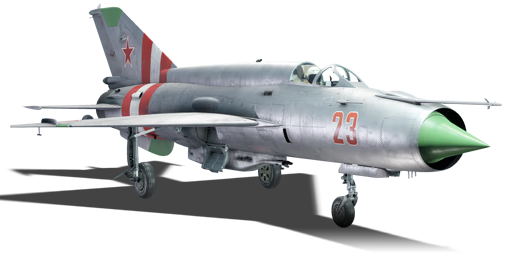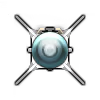



While the Soviet Air Defence Force (PVO) was content with their MiG-21 variants, the Soviet Air Force (VVS) set out to acquire a better fighter-interceptor, as their current MiG-21PF were mainly suited for heavy interception and light ground attack, with little emphasis on air-to-air combat. Research from Mikoyan OKB quickly resulted in the Ye-7S prototype, a MiG-21PF with the new Sapfir-21 radar, allowing it to mount not only the ASP-PF-21 radar-computing gunsight, but also R-3R (K-13R) semi-active radar guided (SARH) air-to-air missile, increasing the lethality of this aircraft during interception and especially during head-on and side-on engagements with enemy aircraft. The design was greatly favoured by the VVS, and after a small request to also increase the fuel capacity, the MiG-21S was born. The MiG-21S had the extra fuel incorporated in the larger saddle tank taken from the MiG-21R variant, while mounting all the avionics upgrades of the Ye-7S prototype. This aircraft would begin delivery to its only operator, the Soviet Air Force (VVS) in 1965, and would see active combat shortly after, most notably participating in the Invasion of Czechoslovakia in 1968.
Introduced in Update "Winged Lions" as a GE premium, the MiG-21S is doctrinally very similar to its contemporary second-generation Fishbed variants of similar battle rating. In simple terms, the MiG-21S is just a MiG-21PFM with more fuel and extra hardpoints due to using the chassis of a MiG-21R. The biggest selling point of this aircraft after its incredible flight performance for its battle rating, is the R-3R radar-guided missiles, which allow for head-on and side-on engagement against unaware or overconfident aircraft, if the radar lock conditions permit. The MiG-21S, while excelling in the flight performance and weapons department for its battle rating, is strongly offset by its abysmal survivability. At a battle rating where it is regularly faced with high-G all-aspect missiles such as the AIM-9L and R-60M, this aircraft is strongly limited by the fact that it lacks any form of countermeasures to defend itself against such threats.
flaps
flaps
flaps
brake
| Name | Weight | Slot | ||||
|---|---|---|---|---|---|---|
| 75.3 kg |  |  |  |  | ||
| 75.3 kg |  |  |  |  | ||
| 235 kg |  |  |  |  | ||
| 16 × | 110.2 kg |  |  |  |  | |
| 250 kg |  |  |  |  | ||
| Drop tank (490 liters.) | 49 kg |  |  |  | ||
| 32 × | 225.5 kg |  |  | |||
| 478 kg |  |  | ||||
| 374 kg |  |  | ||||
| 85.5 kg |  | |||||







 2 x (130 / 375 / 600) %
2 x (130 / 375 / 600) % 
 2 x 220 %
2 x 220 % 

Flight performance |
|---|
Survivability |
|---|
Weaponry | |||
|---|---|---|---|